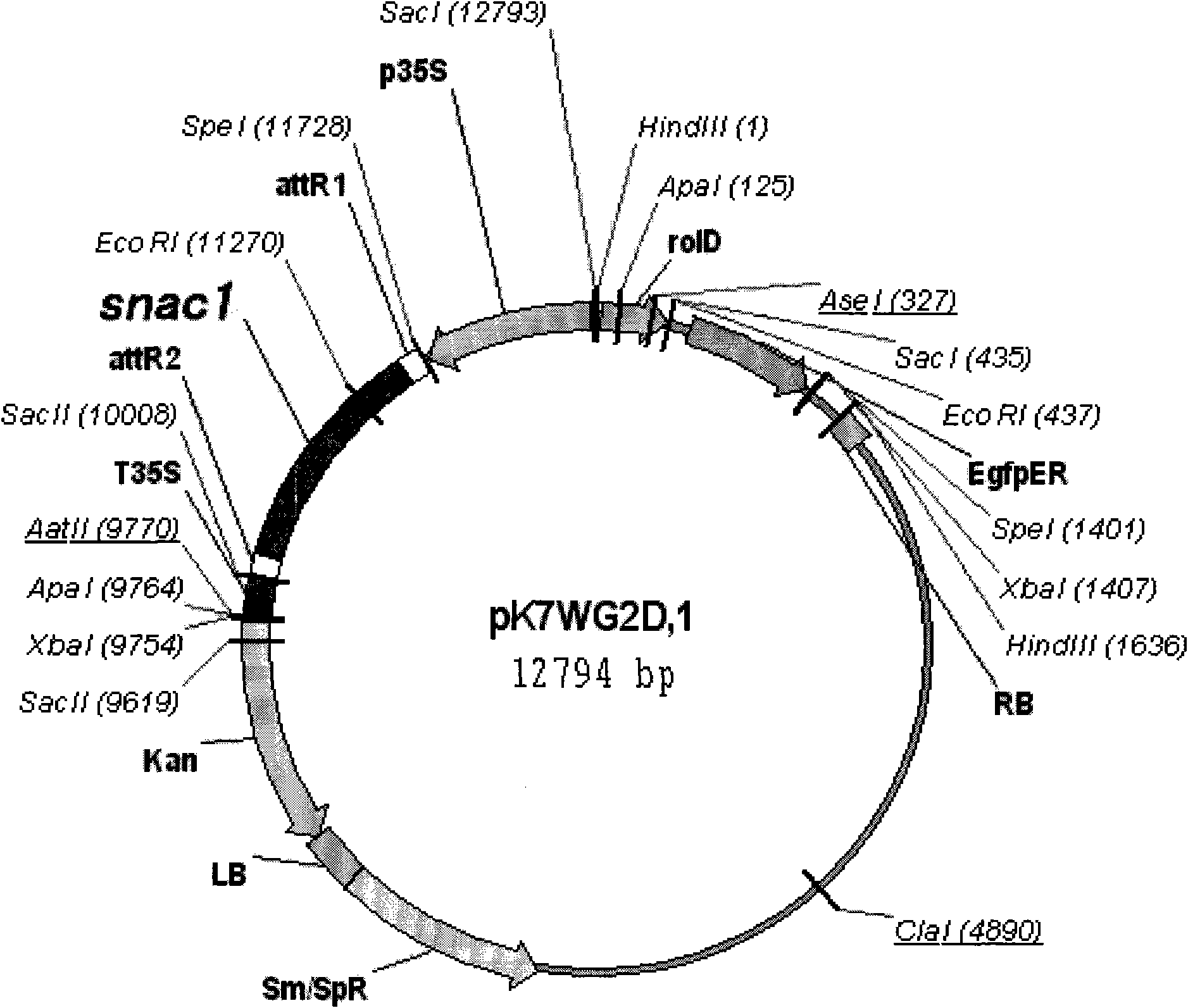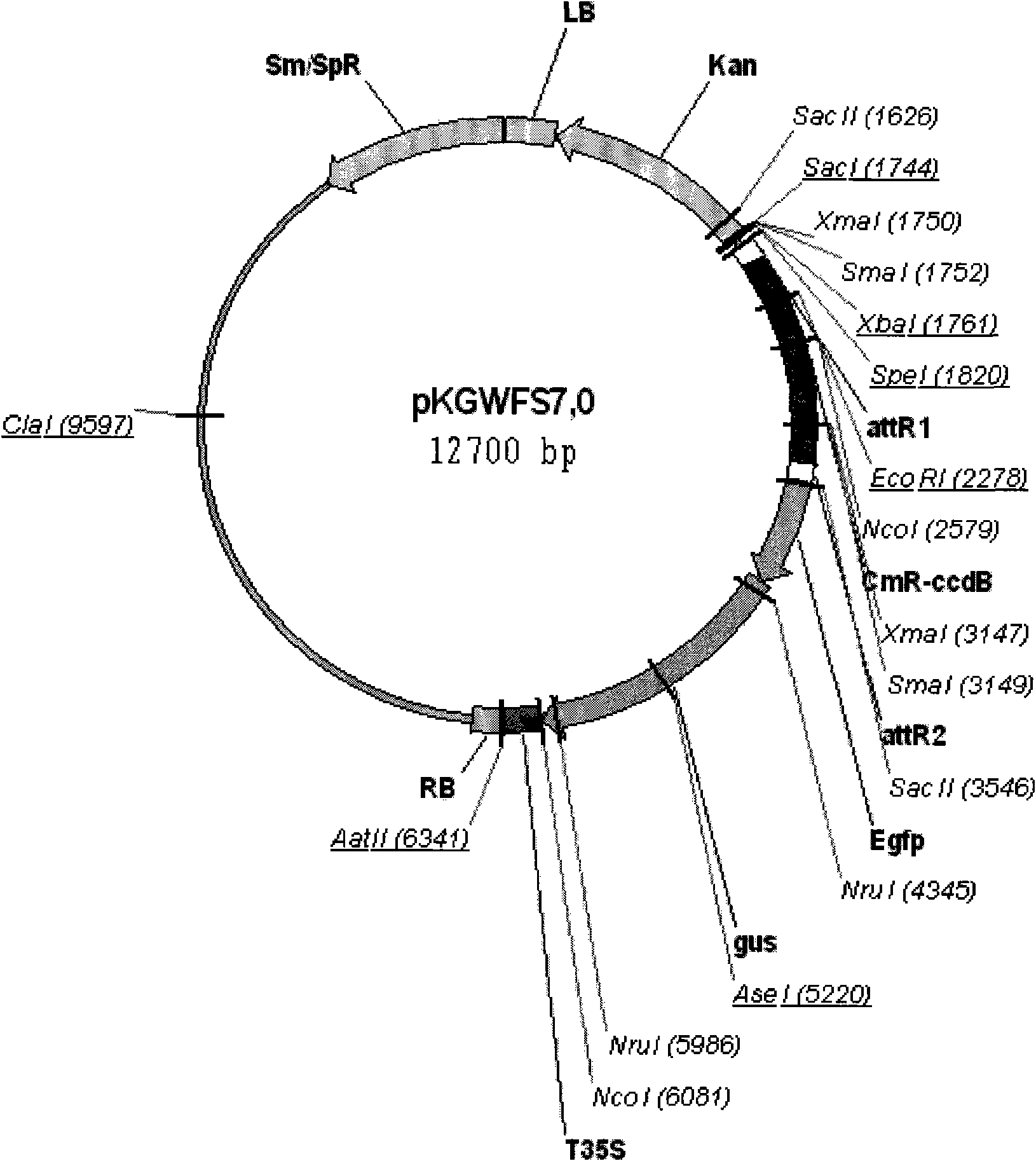Vacuum-infiltration assisted exogenous gene transforming method of soybean germinating embryo
A technology of vacuum infiltration and exogenous genes, which is applied in the field of plant genetic engineering, can solve the problems of far from reaching the model level, low frequency of soybean transformation, poor repeatability, etc., to overcome the limitations of genetic transformation, short transformation cycle, regeneration fast effect
- Summary
- Abstract
- Description
- Claims
- Application Information
AI Technical Summary
Problems solved by technology
Method used
Image
Examples
Embodiment 1
[0048] Jidou 12 (purchased from Weifang Academy of Agricultural Sciences) was used as the acceptor material, and the transformed strain was Agrobacterium strain AGL104 carrying the psnac1::K7WG2D vector (the vector was purchased from Invitrogen).
[0049] (1) Seed disinfection and pre-cultivation treatment
[0050] Soybean seeds were sterilized with 70% ethanol for 5 minutes, and then cleaned with 0.1% HgCl 2 Disinfect for 10 minutes, rinse with sterile water 5-6 times, and soak the seeds in sterile water for 12 hours at 25°C-28°C.
[0051] Soybeans whose embryos swelled and germinated after soaking were put into the pre-cultivation medium, and cultured in light at 28°C for 1 day, wherein the formula of the pre-culture medium was: MS+3.0mg / L 6-BA (6-benzylaminoadenine) +20g / L sucrose+7g / L agar, pH5.8.
[0052] (2) After the seed embryo swells and germinates, it is cut to expose or damage the germinated embryo part
[0053] When the whole pre-cultivated soybean embryo is enl...
Embodiment 2
[0071] Shengdou No. 9 (purchased from Weifang Academy of Agricultural Sciences) was used as the recipient material, and the transformed strain was Agrobacterium AGL104 carrying psnac6::K7WG2D (p2K7GW7 vector was purchased from Invitrogen).
[0072] (1) Seed disinfection and pre-cultivation treatment
[0073] Soybean seeds were sterilized with 70% ethanol for 5 minutes, and then cleaned with 0.1% HgCl 2 Disinfect for 10 minutes, rinse with sterile water 5-6 times, and soak the seeds in sterile water for 12 hours at 25°C-28°C.
[0074] Soybeans whose embryos swelled and germinated after soaking were put into the pre-cultivation medium, and cultured in light at 28°C for 1 day, wherein the formula of the pre-culture medium was: MS+3.2mg / L 6-BA (6-benzylaminoadenine) +20g / L sucrose+7g / L agar, pH5.8.
[0075] (2) After the seed embryo swells and germinates, it is cut to expose or damage the germinated embryo part
[0076] When the whole pre-cultivated soybean embryo is enlarged a...
PUM
 Login to View More
Login to View More Abstract
Description
Claims
Application Information
 Login to View More
Login to View More - R&D
- Intellectual Property
- Life Sciences
- Materials
- Tech Scout
- Unparalleled Data Quality
- Higher Quality Content
- 60% Fewer Hallucinations
Browse by: Latest US Patents, China's latest patents, Technical Efficacy Thesaurus, Application Domain, Technology Topic, Popular Technical Reports.
© 2025 PatSnap. All rights reserved.Legal|Privacy policy|Modern Slavery Act Transparency Statement|Sitemap|About US| Contact US: help@patsnap.com



